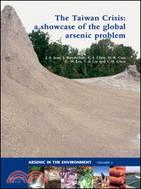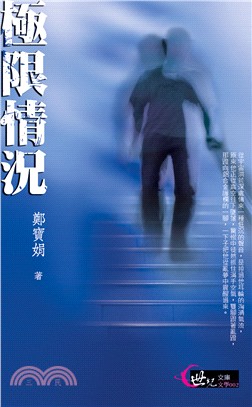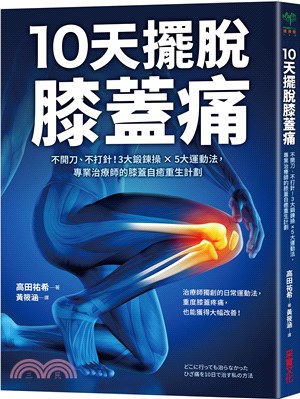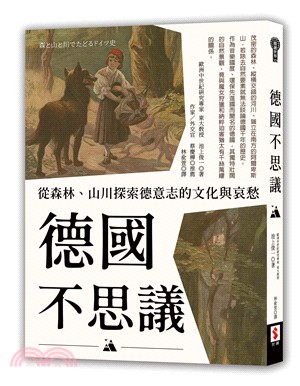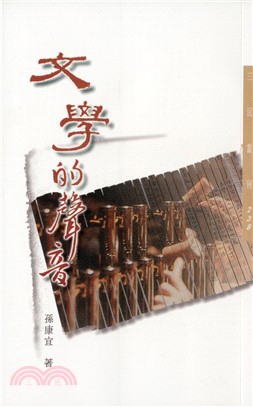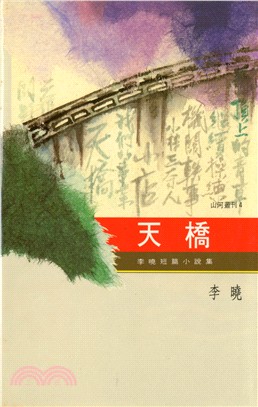The Taiwan Crisis: A Showcase of the Global Arsenic Problem
商品資訊
定價
:NT$ 6300 元若需訂購本書,請電洽客服 02-25006600[分機130、131]。
相關商品
商品簡介
作者簡介
目次
商品簡介
In the 1950s, the residents of the southwestern coastal areas of Taiwan suffered greatly from Blackfoot disease (BFD) due to the consumption of arsenic-contaminated groundwater. Groundwater with high levels of arsenic in southwestern and northeastern Taiwan received much attention. After arsenic-safe tap water was utilized for drinking instead of groundwater in the 1970s, BFD cases decreased greatly. After 1990, no new BFD cases were reported, and as a consequence, BFD problems disregarded. However, arsenic is still present in the groundwater.This book will improve the knowledge and understanding of the occurrence and genesis of arsenic-rich groundwaters in Taiwan. It deals with constraints on the mobility of arsenic in groundwater, its uptake from soil and water by plants, arsenic-propagation through the food chain, human health impacts, and arsenic-removal technologies. Taiwan case experiences are described in this book and can be applied worldwide.
This book is a state-of-the-art overview of research on arsenic in Taiwan and is designed to:
create interest in regions within Taiwan that are affected by the presence of arseniferous aquifers;
draw attention from the international scientific community;
increase awareness among researchers, administrators, policy makers, and company executives;
improve the international cooperation on arsenic problems worldwide.
This book is a state-of-the-art overview of research on arsenic in Taiwan and is designed to:
create interest in regions within Taiwan that are affected by the presence of arseniferous aquifers;
draw attention from the international scientific community;
increase awareness among researchers, administrators, policy makers, and company executives;
improve the international cooperation on arsenic problems worldwide.
作者簡介
Jiin-Shuh Jean (1952, Taiwan) finished his PhD degree in Hydrogeology, specializing in groundwater modeling, from Purdue University, West Lafayette, Indiana, USA. He is a full professor of Hydrogeology at the Department of Earth Sciences, National Cheng Kung University (NCKU), Tainan City, Taiwan. His current research interest is in arsenic mobilization and removal.He is now an associate editor of the Journal of Hydrology, Elsevier and a local chief organizer of the 3rd International Congress on Arsenic in the Environment, which will be held on 17-21 May 2010 at NCKU, Taiwan.
Jochen Bundschuh (1960, Germany) has been working in international academic and technical co-operation programs in different fields of water and renewable energy resources for more than 17 years for the German government. He was a long-term professor for the DAAD (German Academic Exchange Service) in Argentina and an expert of the German Agency of Technical Cooperation (GTZ) (1993-1998). From 2001 to 2008 he worked within the Integrated Expert Program of CIM (GTZ/BA) as an advisor to Costa Rica at the Instituto Costarricense de Electricidad (ICE).Since June 2009 he has been teaching as a professor in the field of renewable energies, in particular geothermics, at the University of Applied Sciences in Karlsruhe (Germany) and is also a researcher at the Institute of Applied Research at the same university, where he works in geothermics and the groundwater arsenic issue.
Chien-Jen CHEN (1951, Taiwan) graduated from Johns Hopkins University with a Sc.D. in epidemiology and became a professor at the National Taiwan University. He has been appointed as the Director of the Graduate Institute of Epidemiology, and Dean of College of Public Health in the National Taiwan University.He has published 505 original, review and editorial articles in refereed journals, which have been cited more than 13,000 times. He has received many accolades and awards for his research achievements, including the Presidential Science Prize, the most prestigious science award in Taiwan.
HOW-RAN Guo (1961, Taiwan) obtained his medical degree in 1988 at the Taipei Medical College (currently the Taipei Medical University), Taipei, Taiwan. He continued his study at the Harvard School of Public Health, Boston, Massachusetts, U.S.A. and earned an M.P.H. (1989), a M.S. in Epidemiology (1990), and a Sc.D. in Environmental Health, with a major in Occupational Medicine (1994). Currently, he serves as the Chair of the Department of Occupational and Environmental Medicine at the National Cheng Kung University as well as the Director of the Department of Occupational and Environmental Medicine at the National Cheng Kung University Hospital, Tainan, Taiwan.
Chen-Wuing LIU (1955, Taiwan), PhD, is a professor in the Department of Bioenvironmental Systems Engineering at the National Taiwan University and since 2007 has been the President of the Taiwanese Soil and Groundwater Environmental Protection (TASGEP). Liu holds a PhD from the University of California at Berkeley in Hydrogeology.
Tsair-Fuh LIN (1963, Taiwan), PhD, is a distinguished professor in the Department of Environmental Engineering (DEnvE) at National Cheng Kung University (NCKU), Tainan City, Taiwan. Since 2009, he has served as the Department Chair of DEnvE at NCKU, Secretary-General of the Chinese Institute of Environmental Engineers in Taiwan, and Chair of the Specialist Group in Off Flavours in the Aquatic Environment, International Water Association.
Yen-Hua CHEN (1976, Taiwan) received her B.S. and M.S from the Earth Sciences Department at National Cheng-Kung University, Taiwan, in 1997 and 1999, respectively. She received a Ph.D. from the Material Sciences and Engineering department of the National Tsing-Hua University, Taiwan, in 2006.
Jochen Bundschuh (1960, Germany) has been working in international academic and technical co-operation programs in different fields of water and renewable energy resources for more than 17 years for the German government. He was a long-term professor for the DAAD (German Academic Exchange Service) in Argentina and an expert of the German Agency of Technical Cooperation (GTZ) (1993-1998). From 2001 to 2008 he worked within the Integrated Expert Program of CIM (GTZ/BA) as an advisor to Costa Rica at the Instituto Costarricense de Electricidad (ICE).Since June 2009 he has been teaching as a professor in the field of renewable energies, in particular geothermics, at the University of Applied Sciences in Karlsruhe (Germany) and is also a researcher at the Institute of Applied Research at the same university, where he works in geothermics and the groundwater arsenic issue.
Chien-Jen CHEN (1951, Taiwan) graduated from Johns Hopkins University with a Sc.D. in epidemiology and became a professor at the National Taiwan University. He has been appointed as the Director of the Graduate Institute of Epidemiology, and Dean of College of Public Health in the National Taiwan University.He has published 505 original, review and editorial articles in refereed journals, which have been cited more than 13,000 times. He has received many accolades and awards for his research achievements, including the Presidential Science Prize, the most prestigious science award in Taiwan.
HOW-RAN Guo (1961, Taiwan) obtained his medical degree in 1988 at the Taipei Medical College (currently the Taipei Medical University), Taipei, Taiwan. He continued his study at the Harvard School of Public Health, Boston, Massachusetts, U.S.A. and earned an M.P.H. (1989), a M.S. in Epidemiology (1990), and a Sc.D. in Environmental Health, with a major in Occupational Medicine (1994). Currently, he serves as the Chair of the Department of Occupational and Environmental Medicine at the National Cheng Kung University as well as the Director of the Department of Occupational and Environmental Medicine at the National Cheng Kung University Hospital, Tainan, Taiwan.
Chen-Wuing LIU (1955, Taiwan), PhD, is a professor in the Department of Bioenvironmental Systems Engineering at the National Taiwan University and since 2007 has been the President of the Taiwanese Soil and Groundwater Environmental Protection (TASGEP). Liu holds a PhD from the University of California at Berkeley in Hydrogeology.
Tsair-Fuh LIN (1963, Taiwan), PhD, is a distinguished professor in the Department of Environmental Engineering (DEnvE) at National Cheng Kung University (NCKU), Tainan City, Taiwan. Since 2009, he has served as the Department Chair of DEnvE at NCKU, Secretary-General of the Chinese Institute of Environmental Engineers in Taiwan, and Chair of the Specialist Group in Off Flavours in the Aquatic Environment, International Water Association.
Yen-Hua CHEN (1976, Taiwan) received her B.S. and M.S from the Earth Sciences Department at National Cheng-Kung University, Taiwan, in 1997 and 1999, respectively. She received a Ph.D. from the Material Sciences and Engineering department of the National Tsing-Hua University, Taiwan, in 2006.
目次
Foreword by Dr. King-Ho WangAuthors prefaceAbout the authorsAcknowledgements
1. Taiwan and the global arsenic problem 1.1 General introduction to the arsenic problem1.2 Arsenic: From history to Taiwan1.3 Arsenic: From Taiwan To the end of the 20th century1.4 Arsenic in the 21st century— Recognizing groundwater arsenic as a global problem1.5 Regulations of arsenic contents in drinking water and its impact on the exposed population1.6 Why was the "Taiwan signal" not immediately recognized worldwide?1.7 Why does arsenic continue to affect people worldwide?
2. Geological controls of arsenic concentrations in ground- and surface waters—An overview of our worldwide state-of-the-art knowledge 2.1 Arsenic in the earth´s environments and introduction into ground- and surface-water resources2.2 Geogenic arsenic: Occurence and sources 2.3 Mechanisms of arsenic mobilization into aqueous environments: an overview2.4 Sulfide oxidation2.5 Arsenic input due to leaching in geothermal reservoirs; the role of geothermal fluids2.6 The role of Fe, Mn, and Al oxides and oxyhydroxides as sources and sinks for dissolved arsenic2.7 Adsorption processes and capacity of clay minerals2.8 Precipitation/dissolution and sorption processes of calcite2.9 Interactions between arsenic and humic substances
3. History of blackfoot disease 3.1 Prologue: A mysterious disease 3.2 Clinical characteristics of blackfoot disease 3.3 Pathological findings of blackfoot disease3.4 Epidemiological characteristics of blackfoot disease
4. Cause of blackfoot disease: Arsenic in artesian well water 4.1 Types of wells in blackfoot disease endemic area 4.2 Characteristics pf well water in blackfoot disease endemic area4.3 Arsenic levels in well water in Lanyang plain 4.4 Association between blackfoot disease and the artesian well water 4.5 Arsenic in drinking water: The cause of blackfoot disease4.6 Co-morbidity of unique arsenic-induced skin lesions and blackfoot disease4.7 Host and environmental co-factors for blackfoot disease 4.8 Arsenic in drinking water and circulatory disease other than blackfoot disease4.9 Arsenic in drinking water and prevalence of diabetis and hypertension4.10 Reduction in mortality of arsenic-induced diseases after implementation of of public water supply system in the endemic area of blackfoot disease
5. Non-vascular health effects of arsenic in drinking water in Taiwan 5.1 Introduction5.2 Skin cancer5.3 Internal cancers5.4 Eye diseases5.5 Other health outcomes5.6 Summary and conclusions
6. Arsenic sources, occurrences and mobility in surface water, groundwater and sediments6.1 Introduction6.2 Hydrogeology and sedimentology of aquifers6.3 Potential arsenic sources 6.4 Arsenic distributions and controls6.5 Arsenic in mud volcanoes and hot springs 6.6 Concluding remarks
7. Arsenic in soils and plants: accumulation and bioavailability7.1 Accumulation and behavior of arsenic in soil 7.2 Bioaccumulation of arsenic in plants and crops
8. Potential threat of the use of arsenic contaminated water in aquaculture8.1 Introduction8.2 Arsenic in aquacultural organisms8.3 Arsenic methylation capability8.4 Health risk assessment
9. Current solutions to arsenic contaminated water9.1 Introduction9.2 Change of water source9.3 Water treatment processes for centralized systems9.4 Point of use and entry devices9.5 Case study in southwestern Taiwan9.6 Recommendations
10. Future areas of study and tasks for the Taiwan arsenic problem10.1 Sources of arsenic and mobilization in groundwater10.2 Human impact through the food chain 10.3 Health effects of arsenic in drinking water, treatment, risk assessment and prevention10.4 Future treatment demands, including nano technology
ReferencesSubject indexLocality index
1. Taiwan and the global arsenic problem 1.1 General introduction to the arsenic problem1.2 Arsenic: From history to Taiwan1.3 Arsenic: From Taiwan To the end of the 20th century1.4 Arsenic in the 21st century— Recognizing groundwater arsenic as a global problem1.5 Regulations of arsenic contents in drinking water and its impact on the exposed population1.6 Why was the "Taiwan signal" not immediately recognized worldwide?1.7 Why does arsenic continue to affect people worldwide?
2. Geological controls of arsenic concentrations in ground- and surface waters—An overview of our worldwide state-of-the-art knowledge 2.1 Arsenic in the earth´s environments and introduction into ground- and surface-water resources2.2 Geogenic arsenic: Occurence and sources 2.3 Mechanisms of arsenic mobilization into aqueous environments: an overview2.4 Sulfide oxidation2.5 Arsenic input due to leaching in geothermal reservoirs; the role of geothermal fluids2.6 The role of Fe, Mn, and Al oxides and oxyhydroxides as sources and sinks for dissolved arsenic2.7 Adsorption processes and capacity of clay minerals2.8 Precipitation/dissolution and sorption processes of calcite2.9 Interactions between arsenic and humic substances
3. History of blackfoot disease 3.1 Prologue: A mysterious disease 3.2 Clinical characteristics of blackfoot disease 3.3 Pathological findings of blackfoot disease3.4 Epidemiological characteristics of blackfoot disease
4. Cause of blackfoot disease: Arsenic in artesian well water 4.1 Types of wells in blackfoot disease endemic area 4.2 Characteristics pf well water in blackfoot disease endemic area4.3 Arsenic levels in well water in Lanyang plain 4.4 Association between blackfoot disease and the artesian well water 4.5 Arsenic in drinking water: The cause of blackfoot disease4.6 Co-morbidity of unique arsenic-induced skin lesions and blackfoot disease4.7 Host and environmental co-factors for blackfoot disease 4.8 Arsenic in drinking water and circulatory disease other than blackfoot disease4.9 Arsenic in drinking water and prevalence of diabetis and hypertension4.10 Reduction in mortality of arsenic-induced diseases after implementation of of public water supply system in the endemic area of blackfoot disease
5. Non-vascular health effects of arsenic in drinking water in Taiwan 5.1 Introduction5.2 Skin cancer5.3 Internal cancers5.4 Eye diseases5.5 Other health outcomes5.6 Summary and conclusions
6. Arsenic sources, occurrences and mobility in surface water, groundwater and sediments6.1 Introduction6.2 Hydrogeology and sedimentology of aquifers6.3 Potential arsenic sources 6.4 Arsenic distributions and controls6.5 Arsenic in mud volcanoes and hot springs 6.6 Concluding remarks
7. Arsenic in soils and plants: accumulation and bioavailability7.1 Accumulation and behavior of arsenic in soil 7.2 Bioaccumulation of arsenic in plants and crops
8. Potential threat of the use of arsenic contaminated water in aquaculture8.1 Introduction8.2 Arsenic in aquacultural organisms8.3 Arsenic methylation capability8.4 Health risk assessment
9. Current solutions to arsenic contaminated water9.1 Introduction9.2 Change of water source9.3 Water treatment processes for centralized systems9.4 Point of use and entry devices9.5 Case study in southwestern Taiwan9.6 Recommendations
10. Future areas of study and tasks for the Taiwan arsenic problem10.1 Sources of arsenic and mobilization in groundwater10.2 Human impact through the food chain 10.3 Health effects of arsenic in drinking water, treatment, risk assessment and prevention10.4 Future treatment demands, including nano technology
ReferencesSubject indexLocality index
主題書展
更多
主題書展
更多書展本週66折
您曾經瀏覽過的商品
購物須知
外文書商品之書封,為出版社提供之樣本。實際出貨商品,以出版社所提供之現有版本為主。部份書籍,因出版社供應狀況特殊,匯率將依實際狀況做調整。
無庫存之商品,在您完成訂單程序之後,將以空運的方式為你下單調貨。為了縮短等待的時間,建議您將外文書與其他商品分開下單,以獲得最快的取貨速度,平均調貨時間為1~2個月。
為了保護您的權益,「三民網路書店」提供會員七日商品鑑賞期(收到商品為起始日)。
若要辦理退貨,請在商品鑑賞期內寄回,且商品必須是全新狀態與完整包裝(商品、附件、發票、隨貨贈品等)否則恕不接受退貨。




